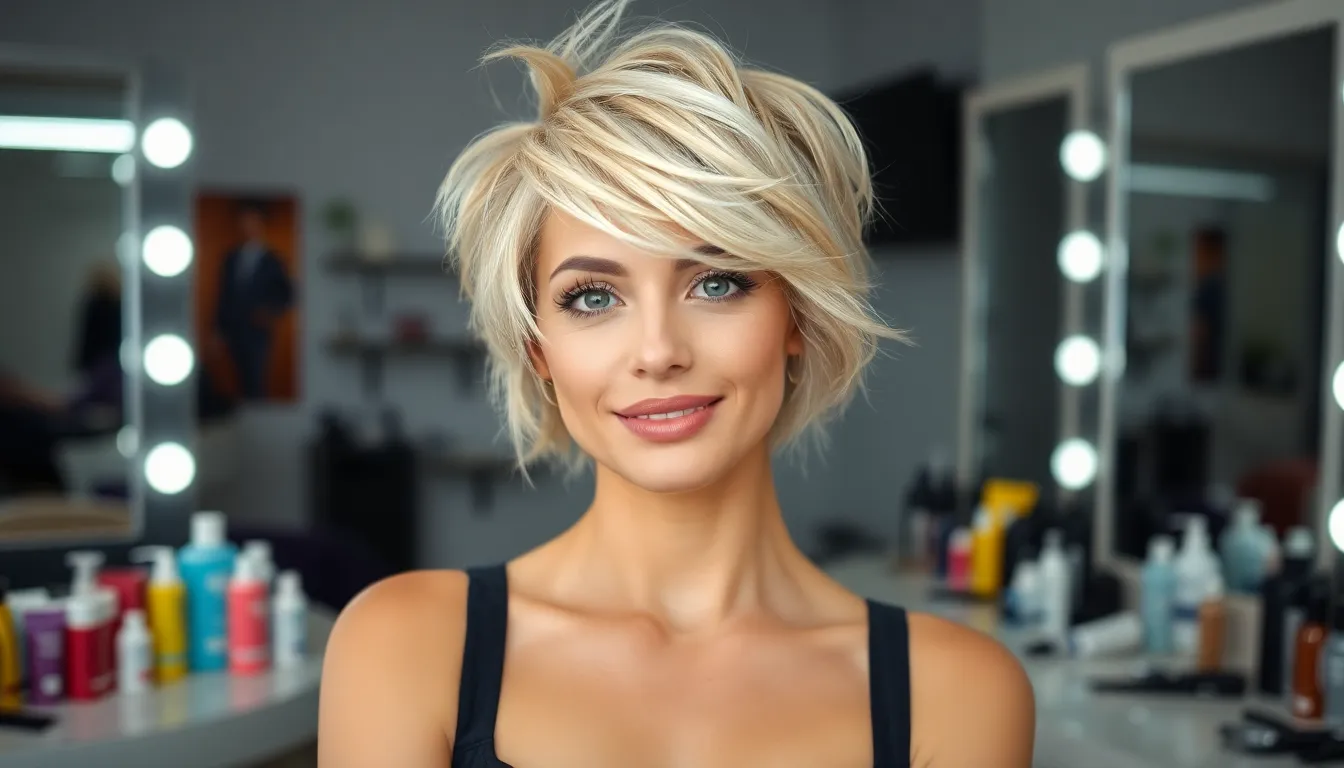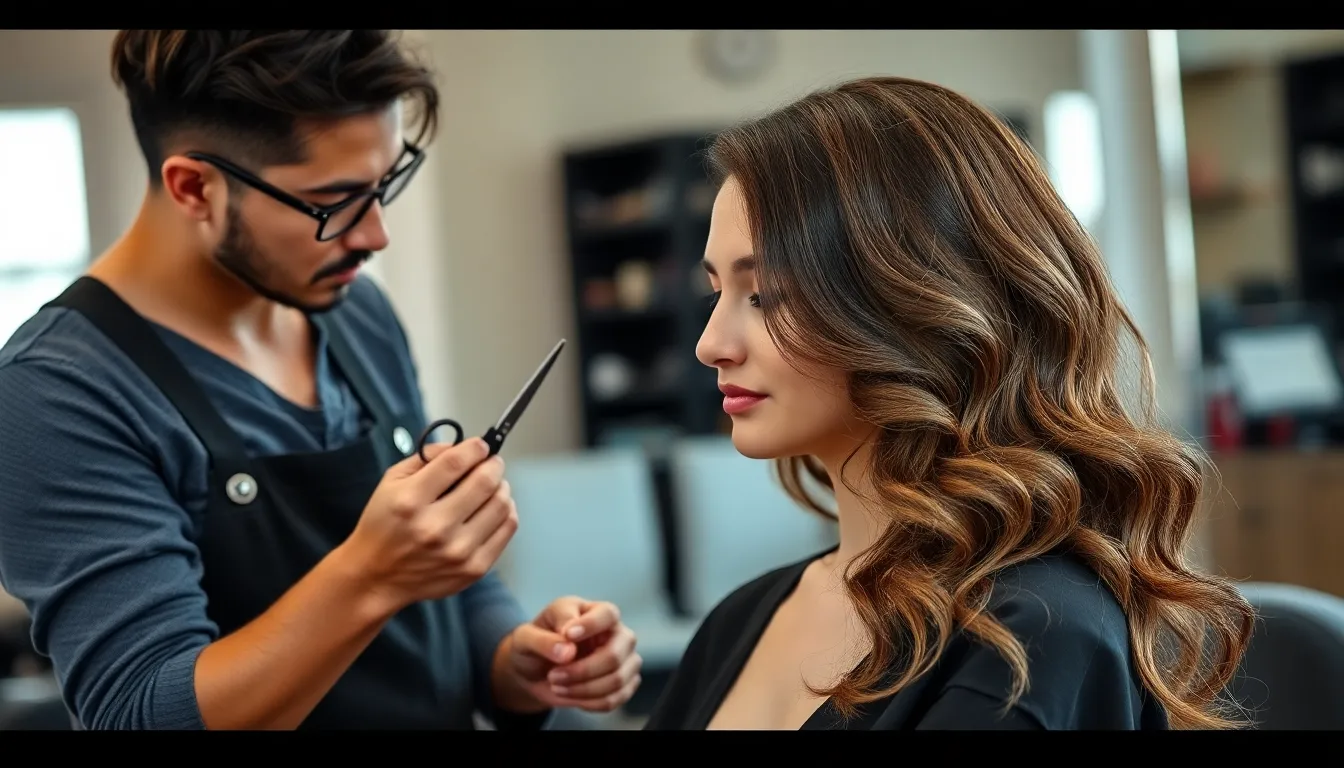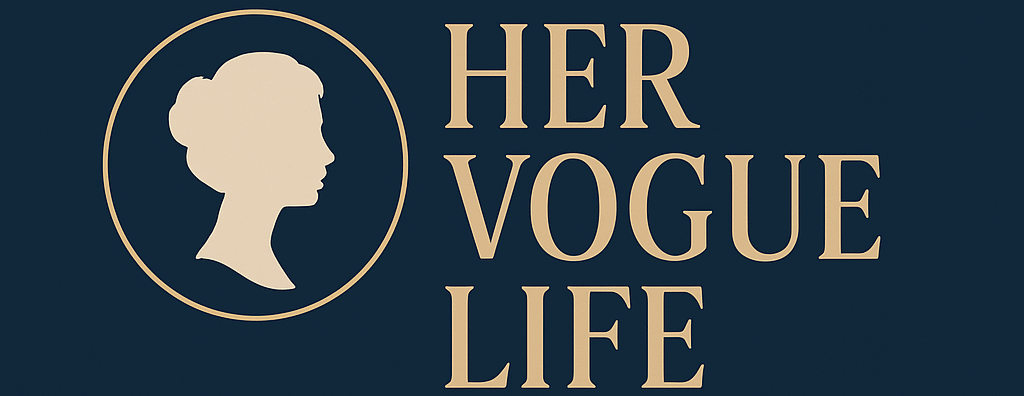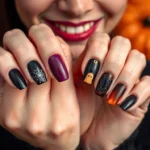Wavy hair has its own unique personality – it’s not quite straight and not quite curly – and finding the perfect haircut that works with your natural texture can feel like solving a puzzle. We’ve all been there: walking out of the salon with a cut that looked amazing on Pinterest but falls flat on our waves.
The secret to gorgeous wavy hair isn’t fighting against your natural texture – it’s choosing cuts that enhance and celebrate those beautiful bends and curves. When you work with your waves instead of against them you’ll discover that maintenance becomes easier and styling time gets cut in half.
We’re here to guide you through the best haircut options specifically designed for wavy-haired women. From face-framing layers that add movement to blunt cuts that create stunning definition we’ll help you find the perfect style that makes your waves the star of the show.
Understanding Your Wavy Hair Type Before Choosing a Haircut
Choosing the perfect haircut starts with understanding your unique wave pattern and hair characteristics. We’ll explore the key factors that determine which styles work best for your exact wavy hair type.
Identifying Wave Patterns: 2A, 2B, and 2C
Type 2A waves form loose, barely-there S-shaped patterns that often fall flat at the roots. We recommend lightweight cuts that add volume without weighing down your delicate wave structure. Fine hair with this pattern benefits from long layers that create movement and prevent the dreaded triangle shape.
Type 2B waves create more defined S-patterns with moderate volume and texture throughout the hair shaft. We find these waves hold their shape well with the right cut and minimal styling products. Medium-density hair in this category responds beautifully to shoulder-length cuts with face-framing layers.
Type 2C waves produce strong, well-defined spirals that border on curly territory. We notice this pattern tends to be coarser and more prone to frizz than its counterparts. Thick hair with pronounced 2C waves thrives with blunt cuts or minimal layering to maintain weight and control.
Considering Hair Density and Porosity
Hair density determines how much hair you actually have per square inch of scalp. We measure this by parting your hair and examining how much scalp shows through. Low density wavy hair needs cuts that create the illusion of fullness, while high density hair requires strategic thinning to prevent overwhelming volume.
Porosity levels affect how your hair absorbs and retains moisture and styling products. We test this by dropping a clean strand into water and timing how quickly it sinks. Low porosity wavy hair repels moisture and needs lighter cuts to prevent product buildup, whereas high porosity hair drinks up moisture quickly and benefits from protective layering techniques.
| Hair Characteristic | Low Level | Medium Level | High Level |
|---|---|---|---|
| Density | Minimal scalp coverage | Moderate thickness | Heavy, full coverage |
| Porosity | Slow water absorption | Normal moisture retention | Rapid product absorption |
| Recommended Cut Style | Volume-building layers | Balanced layering | Weight-maintaining cuts |
Assessing Your Face Shape for Optimal Styling
Round faces benefit from cuts that add height and elongate the appearance of facial features. We suggest longer styles with layers that start below the chin to create vertical lines. Avoid blunt cuts at jaw level that emphasize width rather than length.
Square faces soften beautifully with wavy cuts that feature gentle layers around the jawline. We recommend styles that curve inward toward the face to counteract angular features. Side-swept bangs work particularly well to break up the straight lines of a square face shape.
Oval faces work with virtually any wavy haircut since this shape provides natural balance and proportion. We often use oval faces as our baseline when determining which styles translate well across different face shapes. Both long and short cuts complement the naturally harmonious proportions.
Heart-shaped faces need cuts that balance a wider forehead with a narrower chin. We focus on adding volume and width at the jawline through strategic layering. Chin-length bobs with subtle waves create the perfect counterbalance to prominent cheekbones and foreheads.
Long Layered Cuts for Enhanced Wave Definition

Long layered cuts naturally enhance your wavy texture while creating beautiful movement throughout your hair. We’ve found these versatile styles work exceptionally well for both fine and thick wavy hair types.
Face-Framing Layers for Natural Movement
Face-framing layers bring out the best in your natural wave pattern while adding dimension around your features. These strategic cuts create movement that starts at your cheekbones and flows downward, giving your waves a lived-in, effortless appearance.
Shag haircuts excel at creating this face-framing effect with their choppy, textured layers. The classic shag features shorter pieces around your face that gradually lengthen toward the back, creating a tousled look that’s perfect for medium-length wavy hair.
Cheek-length bobs offer another elegant approach to face-framing layers. These cuts add sophistication while maintaining easy styling, making them ideal if you want a polished look that still celebrates your natural texture.
V-Shaped Cuts for Voluminous Waves
V-shaped cuts create incredible volume by removing weight from the bottom while maintaining length in the front. This cutting technique allows your waves to form more freely, preventing them from being weighed down by excess hair.
Wolf cuts combine the best elements of shags and mullets for maximum volume and movement. These trendy styles feature shaggy layers throughout, creating a low-maintenance yet stylish look that adds important body to wavy hair.
The graduated length in V-shaped cuts helps distribute your hair’s natural volume more evenly. Instead of having all the weight at the bottom, these cuts encourage your waves to spring up and create fullness throughout your length.
Curtain Bangs with Long Layers
Curtain bangs paired with long layers create a glamorous frame for your face while improving your overall texture. These soft, wispy bangs part naturally in the center and blend seamlessly into your layered cut.
Wolf cuts with curtain bangs offer the perfect combination of edginess and elegance. The curtain bangs add a sophisticated touch to the otherwise shaggy layers, creating a balanced look that works for various occasions.
The key to successful curtain bangs with wavy hair lies in their length and graduation. We recommend keeping them long enough to blend with your waves naturally, typically starting around your cheekbones and gradually shortening toward the center part.
Medium-Length Styles That Maximize Wave Potential

Medium-length cuts offer the perfect balance for wavy hair, providing enough weight to control frizz while maintaining movement and bounce. We’ve identified three standout styles that work exceptionally well for this length range.
The Classic Lob for Wavy Hair
Lob cuts deliver maximum impact for wavy hair when positioned just below the chin. This blunt long bob creates natural volume and enhances wave formation without requiring extensive daily styling. We recommend this cut for women with 2A to 2B wave patterns who want a polished yet effortless look.
Styling becomes remarkably simple with light texturizing products that enhance your natural wave pattern. Scrunching damp hair with a volumizing mousse creates the relaxed, full appearance that makes lobs so popular. Air drying works best for this style, allowing waves to form naturally while the blunt cut provides structure and prevents excessive volume at the ends.
Shag Cuts with Textured Layers
Shag haircuts maximize wave potential through abundant layering that creates movement throughout medium-length hair. This classic style highlights natural texture while adding a tousled, lived-in appearance that’s both trendy and timeless. We find shags particularly effective for 2B and 2C wave types that benefit from strategic layer placement.
Layering techniques in shag cuts prevent heavy, flat sections that can weigh down wavy hair. The choppy, uneven layers encourage waves to spring up and create dimension. For finer wavy hair, volumizing products boost body, while thicker textures benefit from center parts and minimal product application to showcase natural wave formation.
Asymmetrical Bobs for Modern Appeal
Asymmetrical cuts add contemporary edge to medium-length wavy hair through strategic length variation. This modern approach involves cutting one side noticeably shorter than the other, creating visual interest and ever-changing movement. We’ve seen this style work particularly well for women who want to make a bold statement while maintaining professional versatility.
Styling asymmetrical bobs requires light hold products that maintain the cut’s distinctive shape while allowing waves to move naturally. The shorter side typically showcases tighter wave patterns, while the longer section displays looser, flowing waves. This contrast creates depth and dimension that enhances the overall wave structure without overwhelming the face.
Short Haircuts That Embrace Natural Wave Texture

We’ve explored medium and long styles, but short haircuts offer incredible advantages for wavy hair. These cuts eliminate excess weight that can pull down waves while maximizing natural texture and movement.
Pixie Cuts with Wavy Styling
Pixie cuts rank among the top choices for wavy hair because their short length naturally enhances body and structure. We recommend the tousled pixie, which features a shorter back and longer front with strategic layers that highlight wave patterns while adding important volume.
Styling these cuts requires minimal effort since the choppy layers work with your natural texture rather than against it. We find that wavy pixies adapt beautifully for both feminine and edgy looks depending on your layering preferences and styling approach.
Products designed specifically for wavy hair help define texture and minimize frizz in pixie styles. Diffusing with low heat preserves wave formation while adding volume at the roots.
Curly Bob Variations
Bobs deliver exceptional versatility for wavy hair across multiple length options. We see excellent results with cheek length bobs, blunt lobs, and collarbone length variations that each offer unique styling benefits.
Customization makes bobs particularly effective for different hair densities. Razored ends work beautifully for thinner wavy hair by creating movement and preventing flatness. Blunt cuts add substantial volume for those seeking fuller appearance.
Light layers and fringe elements accentuate natural wave movement while requiring minimal daily styling. We recommend collarbone length and shoulder length bobs with short layers for women seeking uniform, low maintenance looks that enhance natural texture.
Layered Crops for Easy Maintenance
Layered crops like classic shags and wolf cuts are specifically designed to maximize wavy hair potential. These styles use choppy, shaggy layers that boost volume dramatically while defining your hair’s natural texture patterns.
Curtain bangs paired with layered crops add softness and expertly frame facial features. We appreciate how these cuts enhance natural wave patterns and significantly reduce salon visit frequency compared to more structured styles.
Maintenance becomes effortless with diffuse drying and light styling cream application. These techniques help maintain definition while minimizing frizz, making layered crops ideal for busy lifestyles that still demand stylish results.
Bangs and Fringe Options for Wavy Hair

Adding bangs to your wavy haircut opens up exciting styling possibilities that enhance your natural texture. We’ll explore the most flattering fringe options that complement wavy hair patterns and face shapes.
Side-Swept Bangs for Effortless Style
Side swept bangs create an effortless, laid back style by sweeping your fringe to one side naturally. This versatile option works exceptionally well with wavy hair because it adds movement and beautifully frames your face without fighting against your natural wave pattern.
We recommend side swept bangs for women with 2A to 2B wave patterns since they enhance the hair’s natural flow. The angled cut follows your waves’ direction, creating a seamless blend between your bangs and the rest of your hair. Styling becomes incredibly simple as you can let your waves air dry and gently sweep the bangs across your forehead.
Benefits of side swept bangs include their low maintenance requirements and ability to soften angular face shapes. They work particularly well with long layered cuts and lob styles, creating a cohesive look that celebrates your wavy texture.
Curtain Bangs for Face-Framing Appeal
Curtain bangs feature longer bangs that part down the middle, framing your face and adding a romantic touch to wavy haircuts. These face framing bangs work exceptionally well with wavy hair, improving its natural texture while creating beautiful movement around your face.
We find curtain bangs particularly flattering for women with 2B and 2C wave patterns because they follow the hair’s natural growth direction. The center part allows your waves to fall naturally on either side of your face, creating dimension and visual interest. This style pairs beautifully with wolf cuts, shag haircuts, and long layered styles.
Styling curtain bangs requires minimal effort since they work with your natural wave pattern rather than against it. You can scrunch them with a lightweight mousse or let them air dry for an effortless, textured look that frames your features perfectly.
Micro Bangs for Bold Statement Looks
Micro bangs make a bold, statement look with their short and daring cut that sits well above your eyebrows. While they require more maintenance than longer bangs, micro bangs can add a trendy, edgy touch to wavy haircuts when styled correctly.
We suggest micro bangs for women with finer wavy hair textures, particularly 2A patterns, as thicker waves might overwhelm this delicate fringe style. The contrast between short, precise bangs and flowing wavy hair creates visual drama and modernity. They work best with pixie cuts, layered crops, and asymmetrical bob styles.
Maintaining micro bangs demands regular trims every 3 to 4 weeks to keep their shape sharp and defined. Styling requires a small round brush and blow dryer to smooth the fringe while allowing the rest of your wavy hair to maintain its natural texture.
Professional Styling Techniques for Wavy Haircuts

Mastering the right styling techniques can transform your wavy hair from frizzy to fabulous. We’ll explore proven methods that work specifically with your hair’s natural texture to enhance volume, definition, and overall appearance.
Diffusing Methods for Volume and Definition
Diffuser attachments revolutionize how we style wavy hair by distributing heat evenly across sections. We attach the diffuser to our blow dryer and use circular motions to lift waves at the roots, creating instant volume without disrupting natural curl patterns.
Air flow control becomes crucial when diffusing thick wavy hair. We adjust the heat setting to medium and airflow to low, preventing over-drying that leads to frizz and breakage. This technique works particularly well for 2B and 2C wave patterns that need gentle heat distribution.
Cupping motions with the diffuser help enhance definition in each wave section. We gently place sections of damp hair into the diffuser bowl and pulse the airflow rather than using continuous heat. This method encourages natural texture while minimizing hot spots that can damage hair cuticles.
Scrunching Techniques for Enhanced Texture
Microfiber towel blotting replaces traditional terry cloth towels to reduce friction and frizz. We gently press the towel against wet hair sections rather than rubbing, which helps preserve wave formation and prevents breakage.
Upward scrunching motions enhance natural wave patterns by encouraging hair to form its optimal curl shape. We use our palms to gently squeeze hair upward from ends to roots, working with gravity to create defined waves and increased volume.
Product application during scrunching maximizes texture enhancement results. We apply lightweight mousse or curl cream to damp hair, then scrunch the product through each section to ensure even distribution. This technique works especially well for fine to medium density wavy hair.
Air-Drying Strategies for Natural Results
Plopping technique using cotton t-shirts helps maintain wave integrity during the initial drying phase. We wrap damp hair in a soft cotton shirt for 10-15 minutes, allowing excess water to absorb without disturbing natural curl patterns.
Strategic sectioning during air drying prevents waves from losing their shape. We divide hair into 4-6 sections and twist each section loosely before allowing it to air dry, which helps maintain definition and reduces frizz formation.
Minimal manipulation throughout the drying process preserves natural texture and prevents frizz. We avoid touching or moving hair while it dries, instead allowing waves to form naturally without interference. This approach works best when combined with leave-in conditioners that provide moisture without weighing hair down.
Maintenance Tips for Keeping Your Wavy Haircut Fresh

Once you’ve found your perfect wavy haircut, maintaining its shape and health becomes our next priority. Proper care ensures your waves stay defined and your style remains fresh between salon visits.
Regular Trim Schedules for Healthy Waves
Scheduling trims every 6 to 8 weeks keeps your wavy haircut looking its absolute best. Split ends and damaged hair create frizz that disrupts wave patterns, making regular maintenance essential for preserving your style’s integrity.
Consistent trimming prevents your waves from becoming weighed down by damaged ends. Fresh cuts maintain the layered structure that gives wavy hair its bounce and movement, ensuring each wave falls naturally into place.
Professional stylists can assess your hair’s condition during these appointments and make minor adjustments to enhance your wave pattern. Regular maintenance visits also allow for seasonal style updates without compromising your hair’s health.
Product Recommendations for Wave Enhancement
Leave-in conditioners provide the moisture your waves crave while reducing tangles throughout the day. These lightweight formulas penetrate the hair shaft without weighing down your natural texture, making them perfect for daily use.
Creams and curl gels offer definition and frizz control that transforms unruly waves into polished styles. Apply these products to damp hair using scrunching motions to enhance your natural wave pattern without disrupting its formation.
Hair milks and deep conditioning masks deliver intensive moisture that keeps waves soft and manageable. Weekly treatments with these products restore elasticity and shine, particularly beneficial for chemically processed or heat-damaged wavy hair.
Sulfate-free shampoos and conditioners protect color-treated waves while maintaining natural oils. These gentle formulations prevent excessive dryness that can lead to frizz and breakage, extending the life of your haircut and color.
Sleeping Techniques to Preserve Your Style
Satin pillowcases reduce friction against your hair while you sleep, preventing the frizz and breakage that cotton creates. This simple switch preserves your wave pattern overnight, reducing the need for extensive morning styling.
Sleeping with a satin scarf or bonnet provides even more protection for your waves. Wrap your hair loosely in these smooth materials to maintain definition and prevent tangling, especially during restless nights.
Tying your hair in a loose, high ponytail or pineapple style keeps waves off your pillow while maintaining their shape. Position the elastic band high on your crown to avoid creating creases in your wave pattern, allowing you to wake up with refreshed, defined waves.
Common Mistakes to Avoid When Choosing Wavy Haircuts

Making the wrong choices when selecting wavy haircuts can lead to frustration and styles that fight against your natural texture. We’ve identified the most damaging mistakes that can turn your beautiful waves into a styling nightmare.
Over-Thinning and Excessive Layering
Excessive layering creates a see-through effect that robs your wavy hair of its natural volume and body. Stylists often fall into the trap of adding too many layers, thinking they’re creating movement when they’re actually creating frizz and reducing the hair’s overall density.
Over-thinning strips away the weight that wavy hair needs to form proper curl patterns. We see this mistake particularly with 2B and 2C wave patterns, where removing too much bulk causes the remaining strands to lose their natural shape and spring.
Balanced layering works better than aggressive cutting for wavy textures. Strategic placement of layers enhances natural movement without sacrificing the volume that makes wavy hair look full and healthy.
Heavy texturizing shears can damage the hair cuticle, leading to increased frizz and uneven wave formation. Professional colorists and stylists recommend using these tools sparingly on wavy hair types.
Ignoring Natural Growth Patterns
Growth patterns determine how your waves will fall naturally, yet many people choose cuts without considering this crucial factor. Cowlicks, natural partings, and directional growth all influence how your haircut will look as it grows out.
Understanding your hair’s natural tendencies helps predict which styles will work with your texture rather than against it. We notice that ignoring growth patterns often results in cuts that look great initially but become increasingly difficult to manage over time.
Professional assessment of growth patterns should happen before any major cut, especially for wavy hair that tends to have more complex growth directions than straight hair. Stylists can map these patterns to create cuts that enhance rather than fight your natural flow.
Uneven growth rates in different sections can make certain cuts look lopsided as they grow out. Choosing styles that accommodate these variations prevents the need for frequent touch-ups and maintains the cut’s integrity longer.
Selecting Cuts That Fight Your Wave Pattern
Fighting your natural wave pattern creates a constant battle between your hair’s natural tendency and your desired style. Cuts that require extensive heat styling or chemical treatments to look “right” are working against your hair’s natural texture.
Choosing cuts designed for straight hair often leads to disappointment when your waves don’t cooperate with the intended look. We recommend selecting styles specifically designed to enhance wave patterns rather than hide or alter them.
Blunt cuts can sometimes work against looser wave patterns by creating too much weight at the bottom, preventing waves from forming properly. Long layers and shags typically work better with natural wave movement than geometric cuts.
Heat damage from trying to force wavy hair into unsuitable styles compounds the problem over time. Embracing cuts that celebrate your natural texture reduces styling time and keeps your hair healthier in the long run.
Conclusion
We’ve covered everything you need to know about finding the perfect haircut for your wavy hair. From understanding your exact wave pattern to choosing styles that complement your face shape we’ve provided you with the tools to make confident decisions about your next salon visit.
Remember that the best wavy hairstyles work with your natural texture rather than against it. Whether you’re drawn to a classic lob a textured shag or a bold pixie cut the key is selecting a style that enhances your waves while fitting your lifestyle and maintenance preferences.
Your wavy hair is unique and beautiful. With the right cut proper styling techniques and consistent maintenance you’ll discover that managing and styling your waves can be both effortless and rewarding. Trust your instincts embrace your natural texture and enjoy the journey of finding your perfect wavy hairstyle.
Frequently Asked Questions
What are the different types of wavy hair patterns?
Wavy hair is categorized into three main patterns: 2A, 2B, and 2C. Type 2A features loose, subtle waves that are fine and easy to straighten. Type 2B has more defined waves with moderate volume and texture. Type 2C displays strong, coarse waves that are prone to frizz and have the most defined wave pattern of the three types.
Which haircuts work best for 2A wavy hair?
For 2A wavy hair, lightweight cuts that add volume work best. Long layered cuts, lobs (long bobs), and face-framing layers are ideal choices. These styles enhance the natural wave pattern without weighing down the fine texture. Avoid heavy, blunt cuts that can make 2A waves appear flat and lifeless.
What haircuts are recommended for 2B wavy hair?
2B wavy hair thrives with shoulder-length styles and face-framing layers. Shag cuts with textured layers, classic lobs, and medium-length cuts with strategic layering work exceptionally well. These styles enhance the natural wave definition while providing enough weight to prevent excessive frizz and maintain shape.
How should 2C wavy hair be cut?
2C wavy hair benefits from blunt cuts and strategic layering to manage its coarseness and frizz. Wolf cuts, layered crops, and cuts with minimal thinning work best. Avoid over-layering or excessive thinning, as this can increase frizz and reduce the hair’s natural volume and structure.
How does face shape affect wavy haircut selection?
Face shape plays a crucial role in choosing the right wavy haircut. Round faces benefit from longer styles that elongate the face. Square faces look best with gentle layers that soften angular features. Oval faces can wear most styles versatilely, while heart-shaped faces are flattered by chin-length bobs that balance facial proportions.
What are the best short haircuts for wavy hair?
Short wavy haircuts include tousled pixie cuts, curly bob variations, and layered crops. Pixie cuts enhance body and structure while requiring minimal styling. Curly bobs offer versatility and can be customized for different hair densities. These styles celebrate natural wave texture while providing easy maintenance and modern appeal.
Which bangs work well with wavy hair?
Several bang styles complement wavy hair beautifully. Side-swept bangs create a laid-back style perfect for 2A to 2B waves. Curtain bangs frame the face elegantly and work well with 2B and 2C patterns. Micro bangs offer a bold look and are best suited for finer wavy textures.
How often should wavy hair be trimmed?
Wavy hair should be trimmed every 6 to 8 weeks to maintain the haircut’s shape and prevent split ends. Regular trims help preserve the integrity of the waves and ensure the style continues to enhance your natural texture. This schedule keeps the hair healthy and the cut looking fresh.
What styling techniques work best for wavy haircuts?
Effective styling techniques for wavy hair include diffusing for volume and definition, scrunching for enhanced texture, and air-drying for natural results. The plopping method helps reduce frizz, while upward scrunching enhances wave formation. These techniques work together to maintain wave integrity and create beautiful, defined waves.
What mistakes should be avoided when cutting wavy hair?
Common mistakes include over-thinning and excessive layering, which can lead to frizz and volume loss. Avoid fighting against natural growth patterns and choose cuts that enhance rather than alter your wave pattern. Don’t select styles that require extensive heat styling, as this can damage the hair’s natural texture over time.







